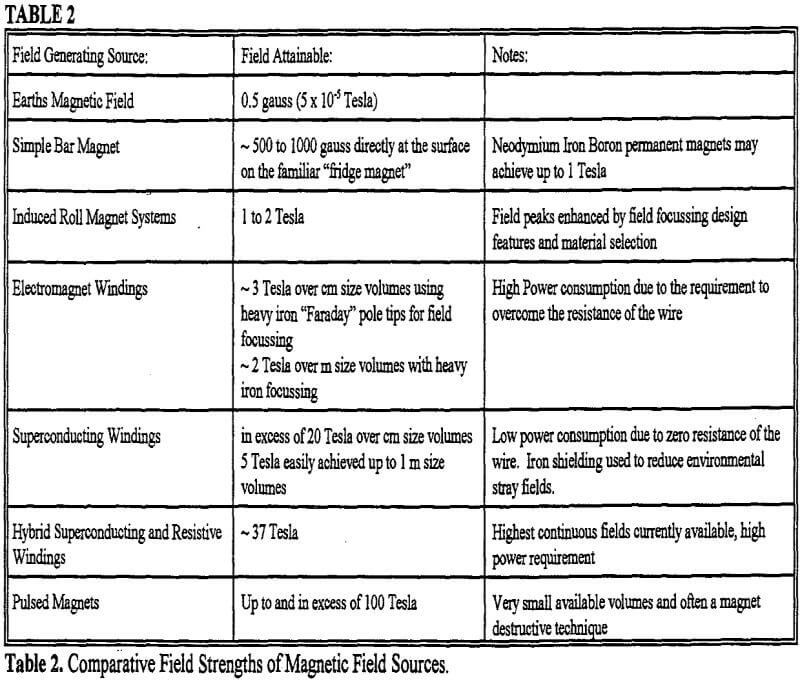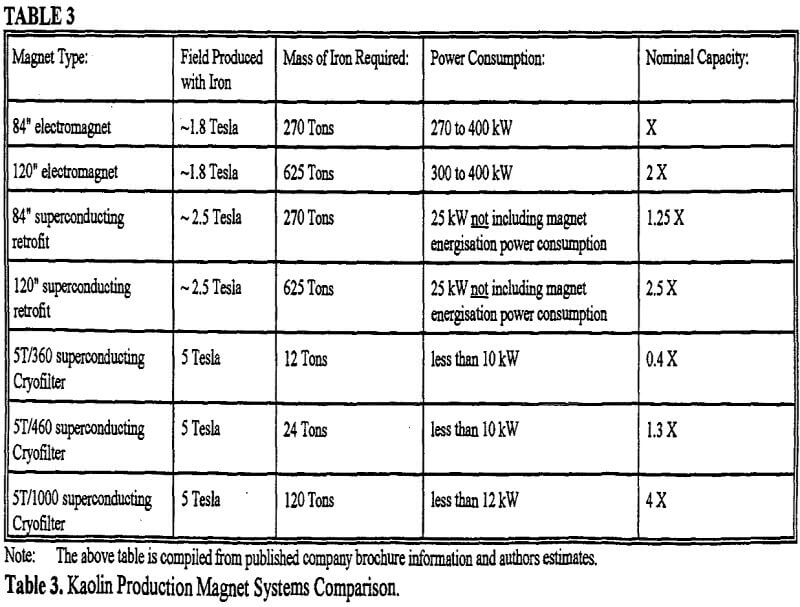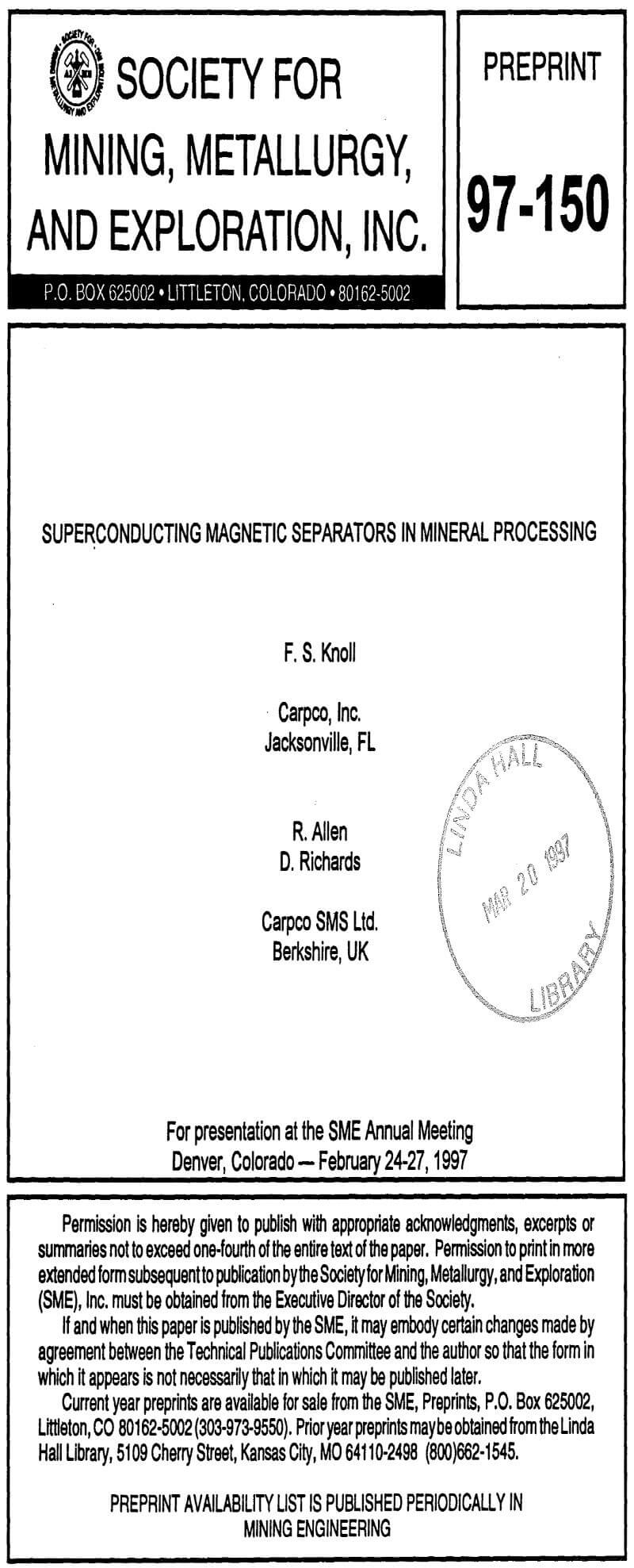The phenomena of magnetism is well known. The way in which materials respond to a magnetic field can be predicted and the design of magnet systems is now regularly modelled on computer. The real step forward has been in the use of superconducting wire wound magnets that enable much higher fields to be generated. Conventional and familiar is the generation of a magnetic field by permanent magnets and by passing current through a resistive coil. Both of these methods have a finite field level capability
that can only be marginally improved upon by modifying the geometries of the permanent magnet block or windings of the coil. While new materials are pushing the field level available from permanent magnets upward they will never be able to achieve the field attainable to anything approaching that of a superconducting system, at least not over the volumes required for industrial scale processing.
Superconducting technology has been commercially available to the physics and electronics research community since the 1950’s and continuous fields in excess of 20 Tesla can now be easily achieved. The same research community also has access to Pulsed magnet systems that can easily attain 60 to 70 Tesla or more over a few 10’s of milliseconds, while special research systems (combined with explosive techniques to compress the field) allow in excess of 100 Tesla to be produced. The highest achievable continuous field is presently -37 Tesla from a combined hybrid magnet employing both superconducting and resistive magnet elements (Table 2). But these very high field techniques require a large power source, as do even low power industrial resistive magnet systems. It is the zero resistance of a superconductor that enables the high fields to be produced. Because the superconducting wire has no resistance the effort required to push a current through that wire in next to nothing, enabling a 5 Tesla superconducting magnet to be run with greatly reduced power requirements. In addition, by the use of a simple superconducting short a superconducting magnet can be operated in “persistent mode” where the power supply may be removed leaving the superconducting coil permanently at the pre set field level, with no requirement to use the power supply until a change in the field level is required.
The most commonly seen commercial use of superconducting magnets is the medical diagnostic tool of Magnetic Resonance Imaging (MRI) operating at fields from -2 to 5 Tesla. There are literally thousands of such systems in reliable operation throughout the world. Certain companies manufacturing these superconducting magnets are shipping in the order of 400 large bore, high field systems per year in order to meet the supply demand. While MRI is a true commercial application of superconductivity, it does not constitute an industrial processing facility. It is the world of the kaolin producer that has brought this to a reality.
Superconductivity over Resistive magnets
The first magnets to be used in the field of kaolin production employed a large flat switch on/off magnet to generate a low field over a large diameter, relatively short cylinder. The open ends of such a design required a large iron mass to focus the field into the separation region up to the 1.5 to 2 Tesla region. The resistive nature of the copper coil required an immense power supply, having a 300 to 400 kW power consumption (Table 3). As a result of burnouts occurring in some of these coils, many of these systems have had the resistive copper coil replaced with a superconducting coil. This results in a lower electrical

power requirement in the order of 80 kW, but still a large mass of iron is needed to focus the field. A 120″ flat superconducting magnet will require some 625 Tons of iron shield. In all cases above the magnet consumes electrical power as it has to be swept up and down in order to allow captured magnetic material to be removed from the matrix.

At fields higher than 2 to 3 Tesla, where iron field focussing ceases to be useful, a long and narrow coil design becomes beneficial. This geometry inherently leads to a more uniform field within the bore of the magnet and ensures that the capturing matrix is more completely enveloped in the required field level (Diagram 3). Iron is then used to shield the environment around the magnet. By putting such a superconducting magnet into persistent mode then allows the system to be used in the most energy efficient way.
This mode of operation is not possible with the flatter design magnet as the mass of focussing iron on top prevents the removal of the capture zone from the magnetic field. The longer, narrower design does not require end shielding and so a canister design that reciprocates in and out of the capture zone is possible.
